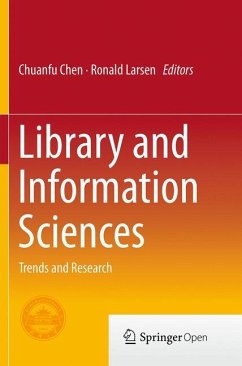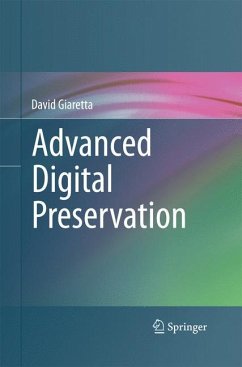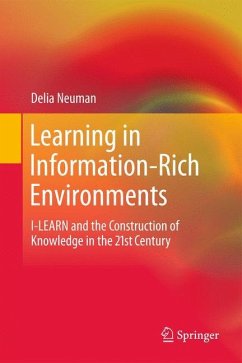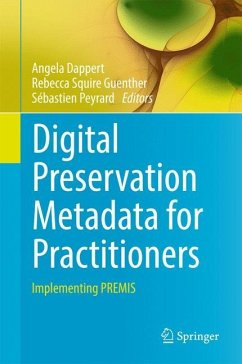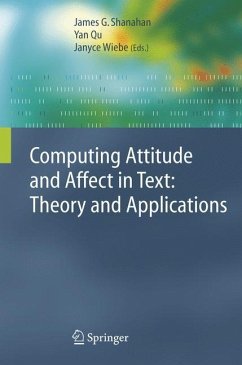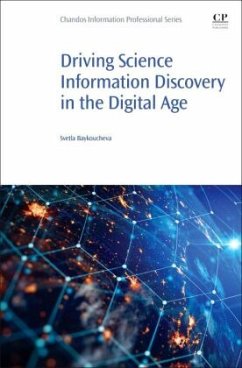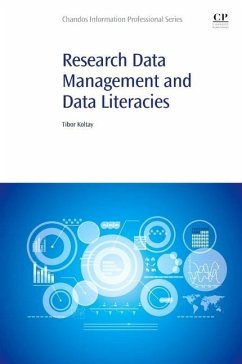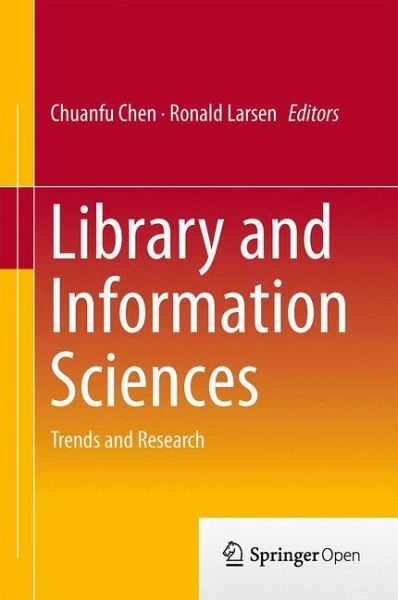
Library and Information Sciences
Trends and Research
Herausgegeben: Chen, Chuanfu; Larsen, Ronald
Versandkostenfrei!
Versandfertig in 6-10 Tagen
38,99 €
inkl. MwSt.

PAYBACK Punkte
19 °P sammeln!
This book explores the development, trends and research of library and information sciences (LIS) in the digital age. Inside, readers will find research and case studies written by LIS experts, educators and theorists, most of whom have visited China, delivered presentations there and drafted their articles based on feedback they received. As a result, readers will discover the LIS issues and concerns that China and the international community have in common.The book first introduces the opportunities and challenges faced by the library and information literacy profession and discusses the key...
This book explores the development, trends and research of library and information sciences (LIS) in the digital age. Inside, readers will find research and case studies written by LIS experts, educators and theorists, most of whom have visited China, delivered presentations there and drafted their articles based on feedback they received. As a result, readers will discover the LIS issues and concerns that China and the international community have in common.
The book first introduces the opportunities and challenges faced by the library and information literacy profession and discusses the key role of librarians in the future of information literacy education. Next, it covers trends in LIS education by examining the vision of the iSchool movement and detailing its practice in Syracuse University.
The book then covers issues in information seeking and retrieval by showing how visual data mining technology can be used to detect the relationship and pattern between terms on the Q&A of a social media site. It also includes a case study regarding tracing information seeking behavior and usage on a multimedia website.
Next, the book stresses the importance of building an academic accreditation framework for scientific datasets, explores the relationship between bibliometrics and university rankings, and details the birth and development of East Asian Libraries in North America.
Overall, the book offers readers insight into the changing nature of LIS, including the electronic dissemination of information, the impact of the Internet on libraries, the changing responsibilities of library professionals, the new paradigm for evaluating information, and characteristics and functions of today's library personnel.
The book first introduces the opportunities and challenges faced by the library and information literacy profession and discusses the key role of librarians in the future of information literacy education. Next, it covers trends in LIS education by examining the vision of the iSchool movement and detailing its practice in Syracuse University.
The book then covers issues in information seeking and retrieval by showing how visual data mining technology can be used to detect the relationship and pattern between terms on the Q&A of a social media site. It also includes a case study regarding tracing information seeking behavior and usage on a multimedia website.
Next, the book stresses the importance of building an academic accreditation framework for scientific datasets, explores the relationship between bibliometrics and university rankings, and details the birth and development of East Asian Libraries in North America.
Overall, the book offers readers insight into the changing nature of LIS, including the electronic dissemination of information, the impact of the Internet on libraries, the changing responsibilities of library professionals, the new paradigm for evaluating information, and characteristics and functions of today's library personnel.





